Fats Domino found his thrill on Blueberry Hill, according to the song he recorded in 1959. But the song ends on a bittersweet note: he laments, “Though we’re apart, you’re part of me still, for you were my thrill, on Blueberry Hill.”
Actual blueberries can indeed be thrilling. Their vibrant color (not really blue, as George Carlin reminds us), their intense sweet-tart taste, and their rocking antioxidant content are all worth celebrating.
But, unlike Fats Domino’s former sweetheart, blueberries are here to stay and serve as a staple in healthy diets worldwide. They originated as food and plant medicine for Native Americans in North America for thousands of years. And they’ve been cultivated and can now be grown in many other regions of the world.
In the early years of the 20th century, USDA botanist Frederick Colville began experimenting with blueberries to try to figure out how to grow them. By 1910, he’d made a key discovery: blueberry bushes need acidic soil to thrive.
After reading his 1910 USDA Bulletin No. 193: Experiments in Blueberry Culture, Elizabeth Coleman White, the daughter of a New Jersey cranberry farmer, reached out to Colville to collaborate on applying his discovery to her farm.
Together, they created cultivated blueberry strains from wild varieties. And in 1916, Colville published his much-awaited sequel, the riveting Directions for Blueberry Cultivation. This publication created the blueprint for wide-scale blueberry farming, turning the small Pine Barren town of Hammonton, New Jersey, into the blueberry capital of the world.
Both cultivated blueberries and wild blueberries can still be found today, although each kind offers different qualities, contributing to their popularity in dishes across the world.
But in this article, we’ll explore the best practices for growing, storing, and cleaning blueberries to ensure they remain at their best. You’ll also get seven delicious cultivated and wild blueberry recipes to put those berries to good use.
When Are Blueberries in Season?
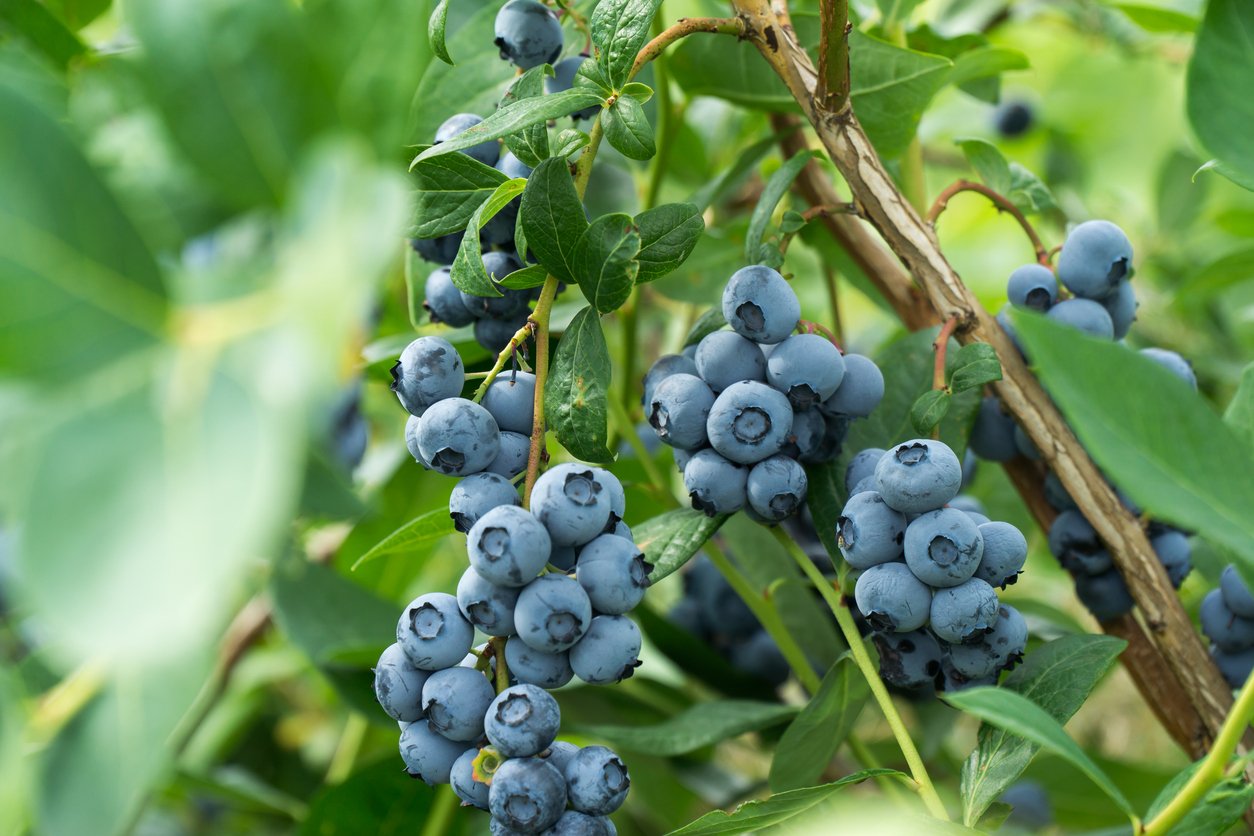
Blueberries are in season from April through September, with peak availability during June, July, and August. (Although some varieties can thrive in the southern hemisphere, blueberries are most commonly grown in North America and Europe.)
The most common types of cultivated blueberries include Northern Highbush, Southern Highbush, and Rabbiteye blueberries. (The latter are called “rabbiteye” because the unripe berries have a pink hue reminiscent of a rabbit’s eye.)
Cultivated blueberries typically prefer warm and humid climates. Most varieties can be grown in USDA zones 3–8, with some varieties surviving in zones 9 and 10.
Wild blueberries are native to most of the northern US and are often found in Maine and parts of Canada. Typically referred to as Lowbush blueberries, these varieties have a shorter growing season — from late July to early September — and thrive in USDA zones 3–7.
How to Grow Blueberries
If you want to try your hand at growing your own blueberries, there are a few things to keep in mind.
Even if you plant just a few bushes to start, many varieties are so prolific that you might be able to harvest several pounds a day for several weeks. Fortunately, they’re delicious and freeze well.
Both cultivated and wild blueberries thrive in well-drained, sandy, acidic soil. The best time to plant them is in fall or spring to give the plants time to put down strong roots before the growing season. You’ll also need patience. It may take two to three years before you can pick a lot of berries from the first planting.
You can protect your harvest from birds by using netting and keeping an eye on the plants to monitor for common pests like aphids and blueberry maggots. Organic fungicides can help prevent diseases like powdery mildew.
Care for your berry bushes with regular watering, especially during dry periods, and give them lots of mulch to keep the moisture in the soil from evaporating. (They can be so demanding of water and mulch. One farmer I know calls them “bluebabies.”) Many experts recommend mulch from pine trees (in the form of bark, sawdust, or needles), as it does double duty, acidifying the soil as it breaks down.
Prune dead or weak branches to keep your plants healthy and encourage more growth, flowering, and, therefore, berries.
How to Pick Blueberries
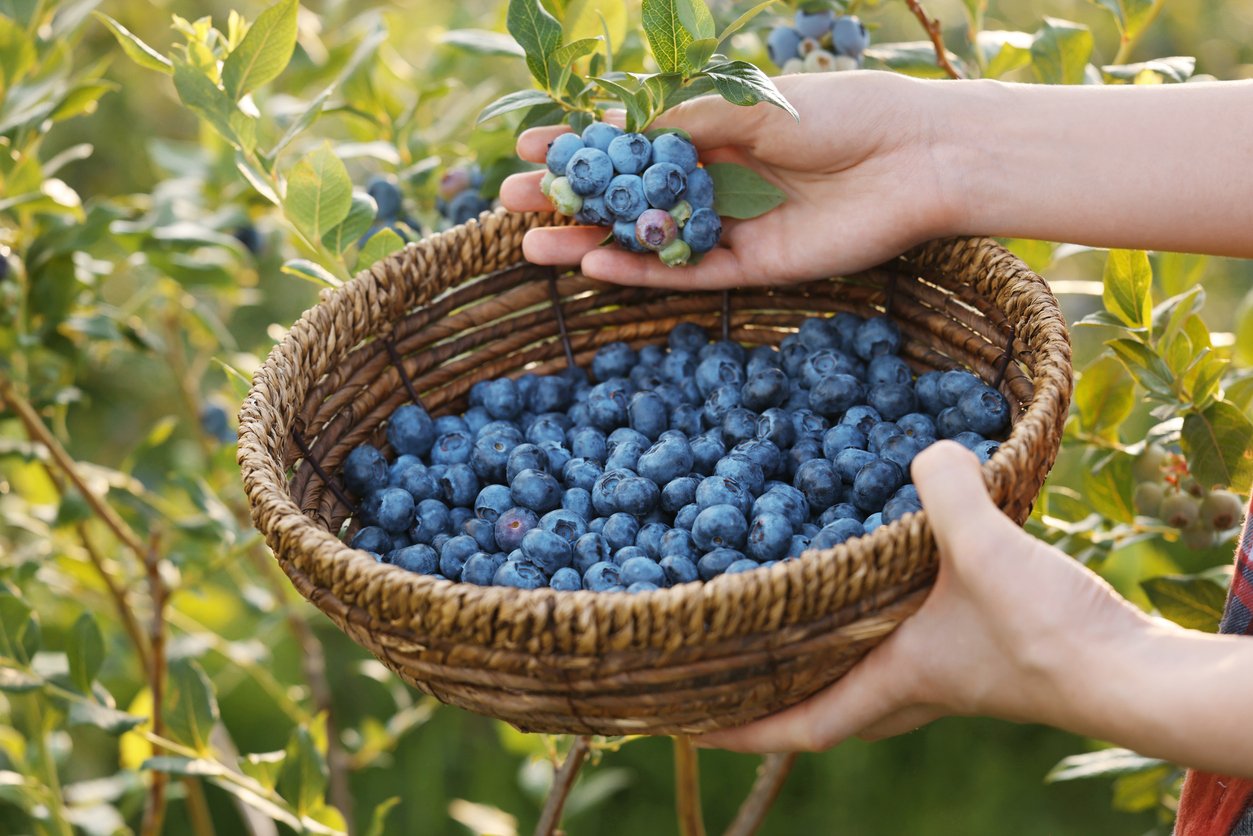
You can pick berries you’ve grown in your garden, on a U-pick farm, or even through wild foraging (but only if you know what you’re doing). Some bluish berries like pokeberries, nightshade berries, and Virginia Creeper berries are poisonous and can lead to nausea, dizziness, and even death. Never eat a berry you’re not sure of!
Look for blueberries with a solid, deep blue-purple or blue-grey-ish hue. Don’t be put off if they have a whitish coating; this is called “bloom” and is a natural form of protection that keeps moisture in and insects out.
Unripe blueberries may be white, green, or red, or have a purple color around the stem. Don’t pick them for later; blueberries don’t continue to ripen after picking.
Pro tip: Berries picked in the cool of the early morning will have a longer storage life than those holding the heat of the day.
How to Keep Blueberries Fresh and Store Them
Fresh blueberries can last for about one to two weeks in the refrigerator when stored properly. For optimal freshness, store them in a breathable container or produce drawer. Both wild and cultivated blueberries have similar storage requirements, though wild blueberries may have a slightly shorter shelf life.
To freeze blueberries, first rinse and dry them thoroughly. Spread them in a single layer on a baking sheet and freeze until solid, at which point you can transfer them to a freezer-safe bag or container. (That extra step is so they don’t freeze as one giant clump.)
Frozen blueberries can last up to a year, which is good news if you planted a lot of bushes one year and now get 10 pounds a day in the summer. (Which happened to a friend of mine.)
How to Clean Blueberries
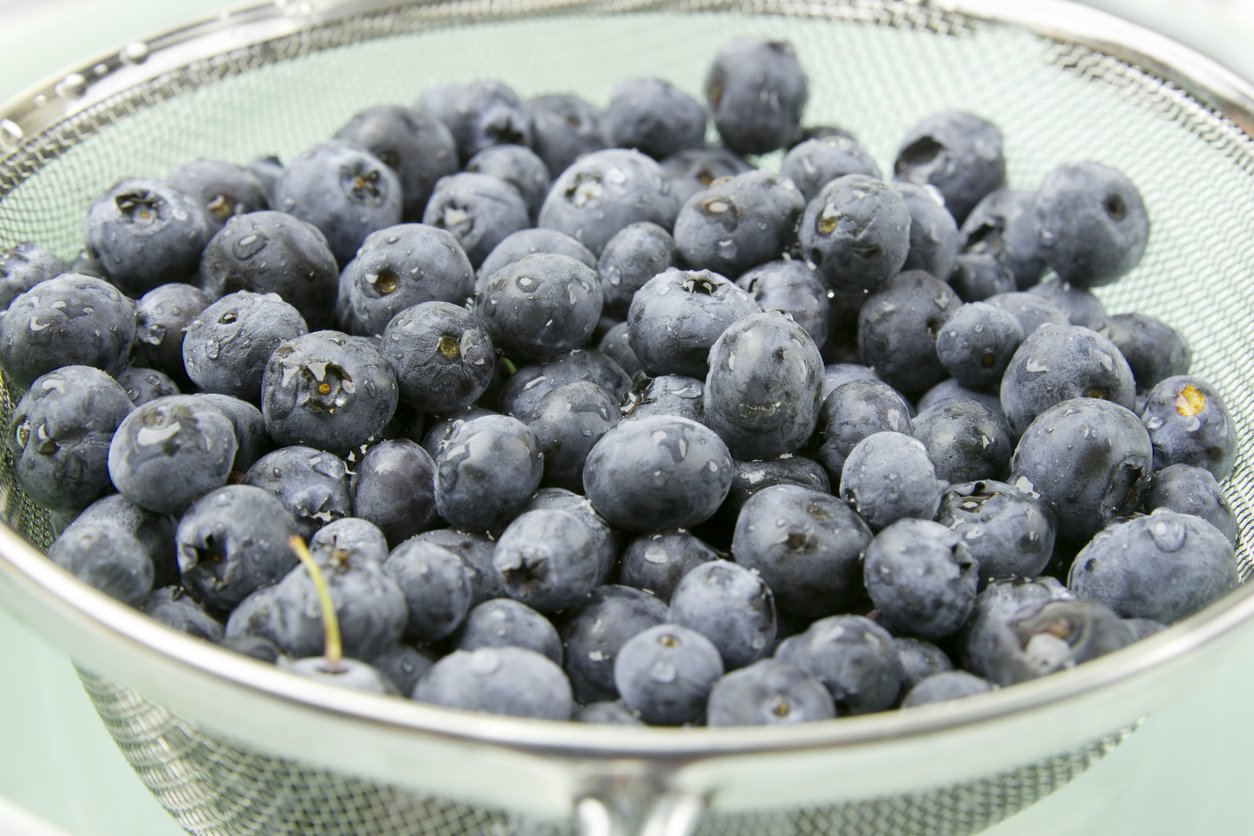
One reason to grow your own blueberries is that cultivated blueberries are on the Environmental Working Group’s “Dirty Dozen” list — that is, one of the crops with the highest concentrations of pesticides. Non-organic blueberries were found in 2024 to contain as many as 17 different pesticide residues, four more than 10 years earlier.
The safest approach is to choose organic varieties when possible to keep pesticides out of your body. If organic blueberries aren’t available or accessible within your budget, you can wash blueberries and still reduce your pesticide exposure. Soak them in a solution of baking soda and water for 12–15 minutes.
The formula is one ounce of baking soda in 100 ounces of water. Here’s a comprehensive article on the most effective ways to clean fruits and vegetables.
Since berries are highly susceptible to mold growth when exposed to high moisture levels, it is best to clean blueberries right before you’re ready to consume them. Once they’re clean, drain and dry the berries well before enjoying them as a snack or adding them to a dish.
How to Use Blueberries
You can eat blueberries raw or cooked. Cooked blueberries often have a more intense flavor, while raw berries retain more antioxidants and other phytonutrients. Wild blueberries also have higher concentrations of antioxidants and minerals than cultivated varieties.
For more on the health benefits of blueberries, read our in-depth article, Are Blueberries Really As Healthy As They’re Claimed to Be?
Ways to use raw blueberries:
- Eat them by the handful, either fresh or frozen
- Include them in leafy salads and fruit salads
- Eat them on top of hot or cold whole-grain cereals or yogurt bowls and parfaits
- Include them in salsas, salad dressings, and blended into sauces
- Include them in smoothies, smoothie bowls, and acai bowls
- Include them as the base for ice cream, popsicles, and other frozen desserts
Ways to use cooked blueberries:
- In muffins, cakes, pies, crumbles, crisps, cobblers, and pancakes
- Stew in porridge or oatmeal
- Make homemade jams, jellies and sauces
- Roast with vegetables and proteins to add a sweet and tangy contrast
- Mull with spices to make homemade, alcohol-free wine
Blueberry Recipes
Get ready for a berry blast with these seven plant-based blueberry recipes! Packed with juicy flavor, these blueberry dishes are as tasty as they are nutritious.
Whether you need a refreshing breakfast, a wholesome snack, or a delightful dessert, these recipes deliver. From hearty Blueberry Poppy Seed Pancakes to vibrant Blueberry Banana Chia Pudding, each dish showcases the natural sweetness and health benefits of blueberries in fun and creative ways.
Dive in and enjoy these irresistible blueberry creations!
1. Blueberry Poppyseed Pancakes

Plunge into a stack of these hearty and berry-licious Blueberry Poppy Seed Pancakes. Packed with organic buckwheat flour and rolled oats, they’re rich in fiber and plant-based protein. The flax egg adds a boost of omega-3 fatty acids for heart health. But the real stars here are the organic blueberries, bursting with juicy flavor and antioxidants that support overall well-being.
Poppy seeds add a nutty crunch and essential minerals, while a hint of lemon zest and a drizzle of maple syrup bring a perfect balance of citrusy sweetness.
Enjoy this tasty and wholesome berry-packed treat for a deliciously great start to your day!
2. Blueberry Beet Smoothie Bowl
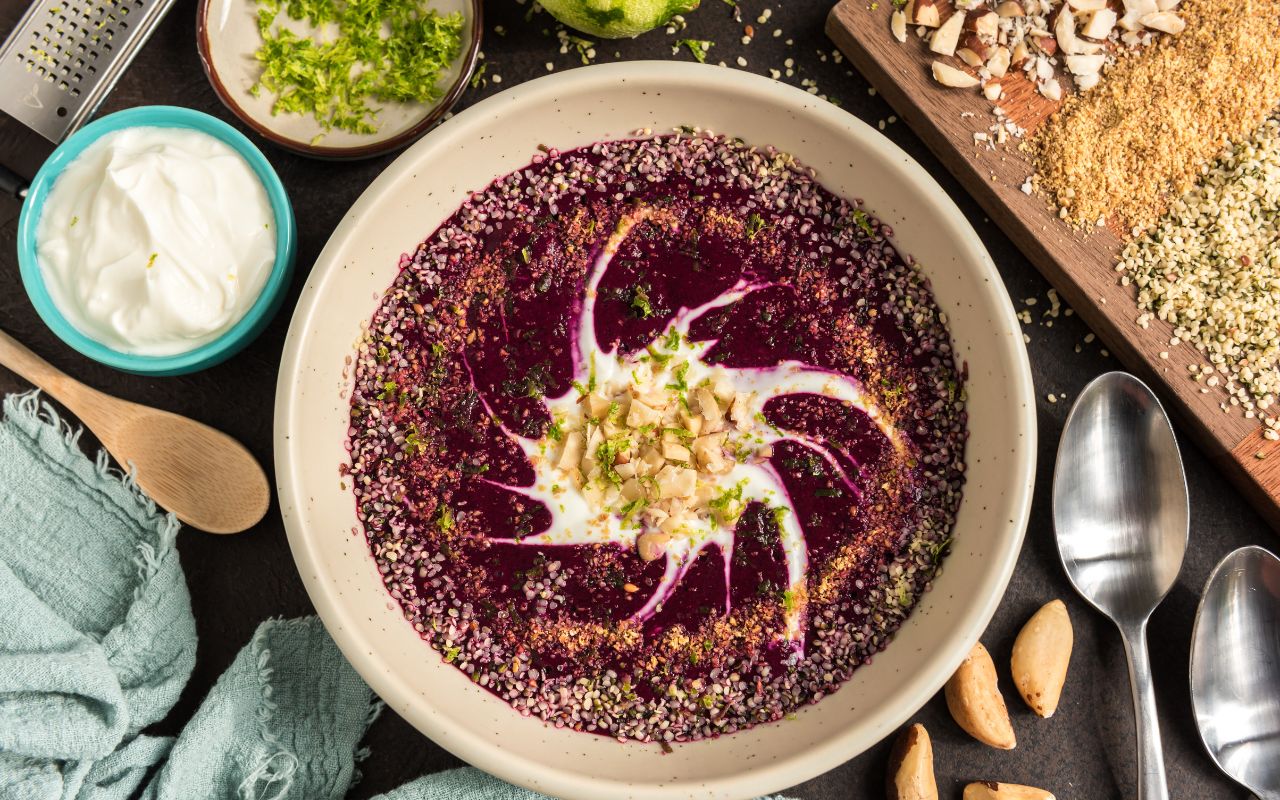
Enjoy the vibrant blend of blueberries and beets in this stunning smoothie bowl, showcasing the best of what blueberries have to offer.
Packed with anthocyanins, this dish isn’t just visually appealing — it’s a powerhouse of nutrition. Antioxidants, fiber, iron, and vitamin C all contribute to a healthy body, sharp mind, and happy taste buds.
Ideal for a nutritious, energizing start to the day or a refreshing afternoon pick-me-up, this blueberry smoothie bowl marries subtle sweetness with wholesome nourishment.
3. Tangy Blueberry Dressing
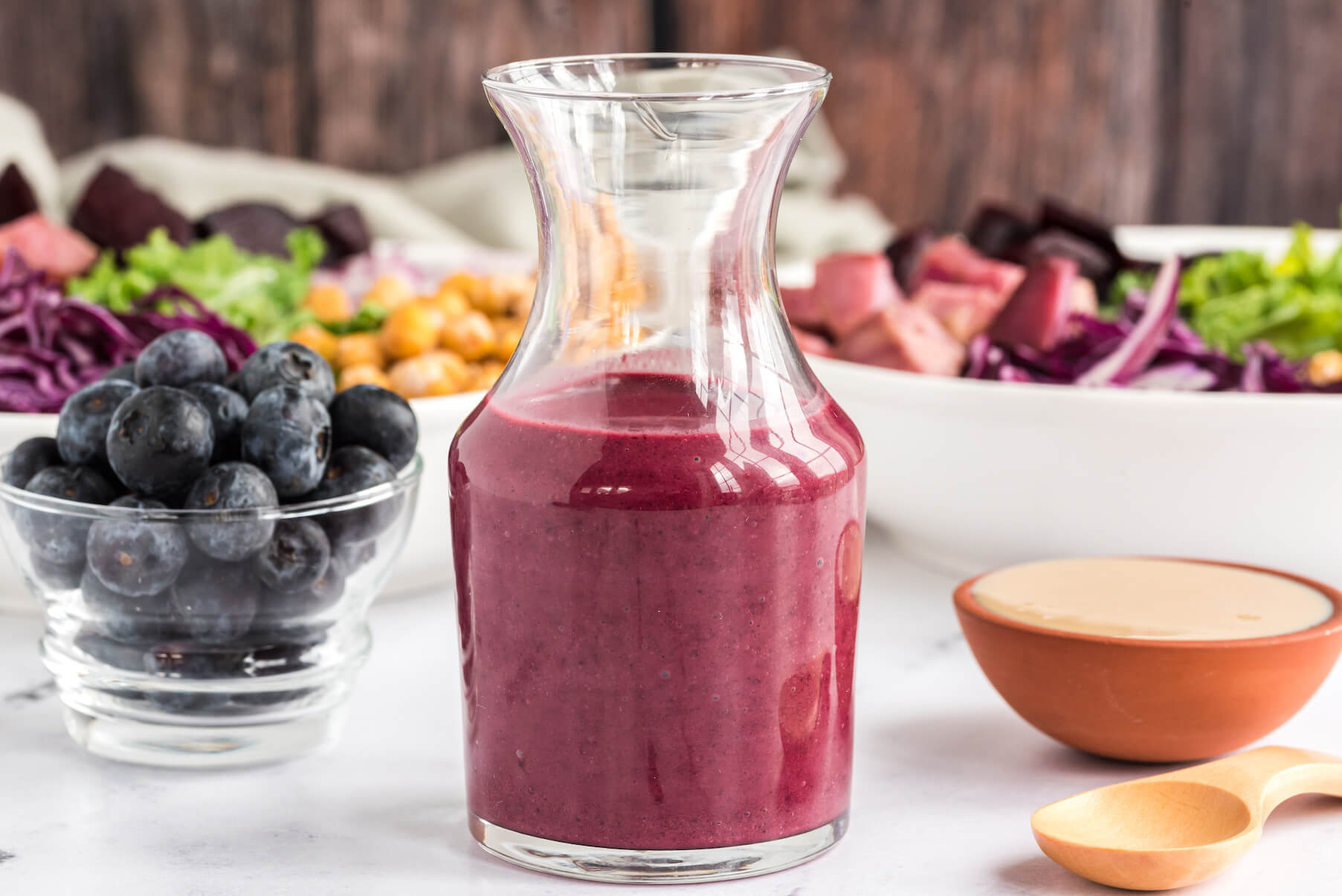
Transform your salads with this delightful Tangy Blueberry Dressing.
Antioxidant-rich berries bring a burst of sweetness and vibrant color to the dressing. Combined with creamy tahini and tangy balsamic vinegar, this salad dressing has a unique and refreshing flavor profile. Lime juice and date paste enhance the flavor even more, while Dijon mustard adds a subtle kick.
Finished with a touch of optional salt and black pepper, this dressing is a perfect blend of sweet and savory tanginess. Enjoy the distinct and delicious taste of blueberries in every bite!
4. Roasted Carrots With Blueberry Balsamic Glaze
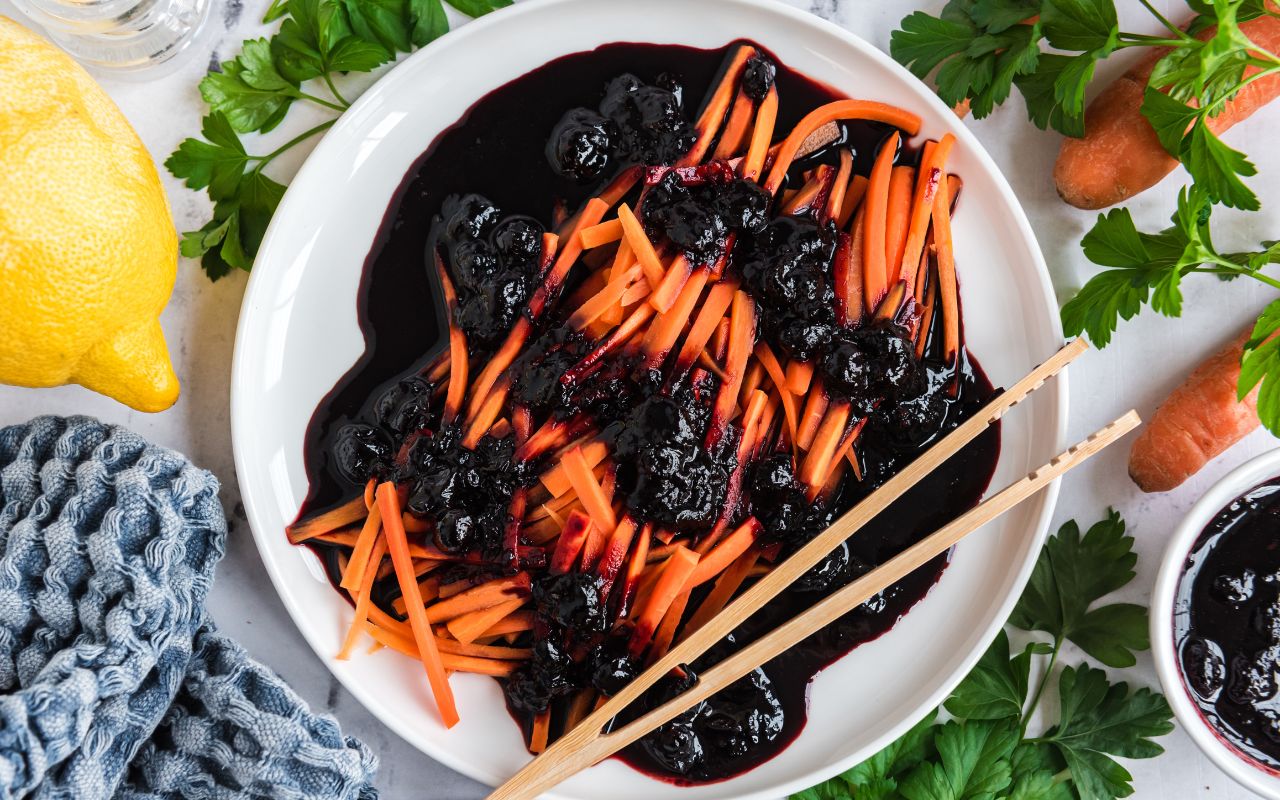
So simple, yet packed with flavor, Roasted Carrots With Blueberry Balsamic Reduction is a deliciously unexpected comfort dish.
The real star here is the blueberry balsamic glaze, which boils blueberries and balsamic vinegar to create a thick, sweet, and intensely flavorful sauce. As the balsamic reduces, it gets sweeter, perfectly blending with the blueberries.
This bold, mouthwatering reduction is so good, that you’ll want to make extra to drizzle on other dishes throughout the week. Check out the Chef’s Notes for more tasty ideas!
5. Blueberry Lemon Bars

These delightful Blueberry Lemon Bars bring a burst of sweetness that perfectly complements the tartness of lemon. Indulging in this whole foods dessert is not just a treat for your taste buds but also a powerhouse of health.
The oats, nuts, and seeds make these lemon bars super satisfying. And each bar is loaded with fiber, vitamins, minerals, and phytonutrients, making them a nutritious choice any time of day.
Enjoy the sunshine-like flavors and health benefits of these blueberry-enhanced bars!
6. Blueberry Banana Chia Pudding

Kick your everyday chia pudding recipe up a notch with this Blueberry Banana Chia Pudding.
This combination of juicy blueberries, ripe bananas, plant-based milk, and chia seeds is both creamy and refreshing. Organic rolled oats also provide heartiness, while slivered almonds and cacao nibs add a satisfying crunch.
Naturally sweet, this blueberry recipe is perfect for breakfast, a snack, or a healthy dessert. Savor the delicious fruity flavor and wholesome goodness in every bite!
7. Blueberry Pomegranate Mulled Wine (Non-Alcoholic)
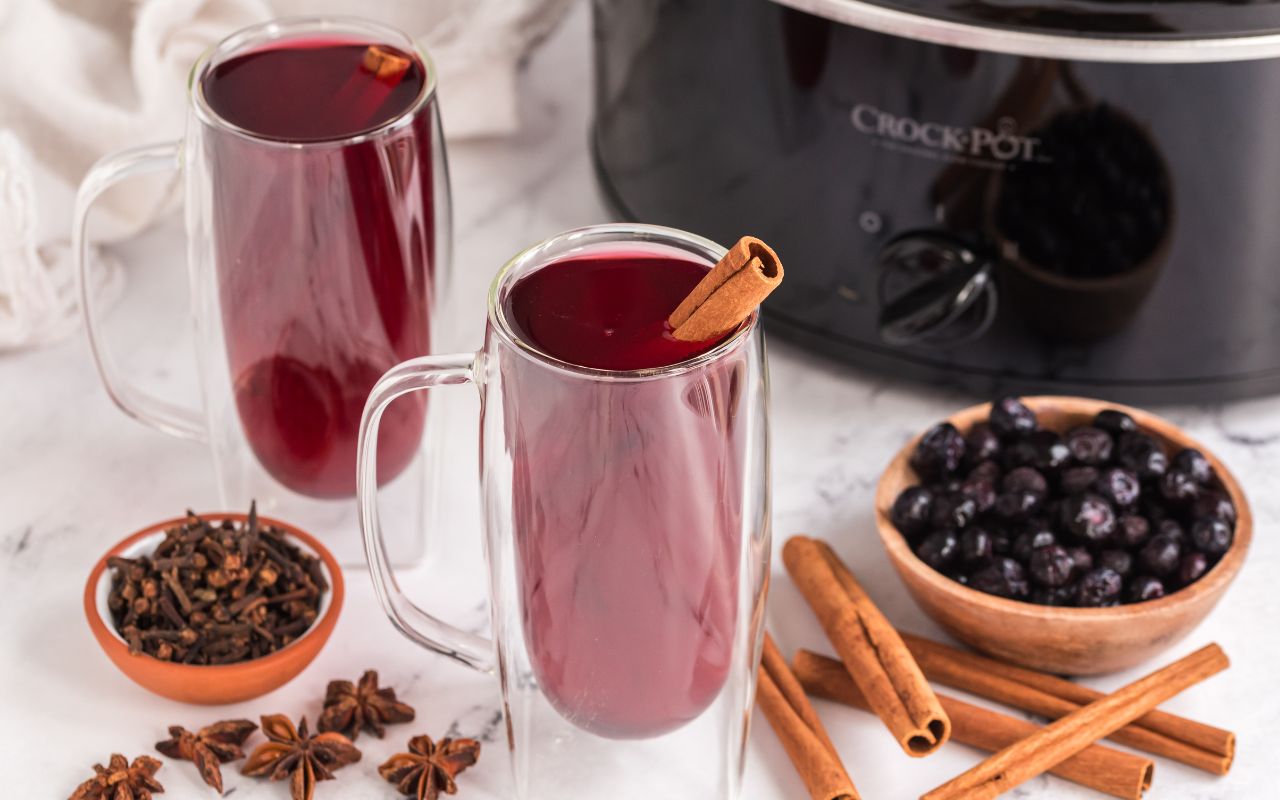
Sip on this Blueberry Pomegranate Mulled Wine Mocktail and enjoy a cozy and delicious drink packed with antioxidants. Mixed with pomegranate and grape juice and spiced with cinnamon and cloves, this blueberry mocktail offers a flavor and aroma that will warm your soul and invigorate your senses.
Enjoy the plant-powered goodness and vibrant blueberry tang in every sip!
Enjoy Blueberries!
From their rich history as a staple food for Native American tribes to their modern-day popularity, blueberries are a valuable fruit to incorporate into your diet. Enjoying blueberries to their fullest involves selecting, storing, cleaning, and finding diverse ways to incorporate them into your diet.
With these tips and guidelines, you can ensure that every batch of blueberries you bring home remains fresh and delicious. Whether you snack on them fresh from the blueberry bush, blend them into smoothies, or bake them into your favorite treats, blueberries add a vibrant touch to your meals and color to your table.
Tell us in the comments:
- What are your favorite ways to eat blueberries?
Featured Image: iStock.com/Andrii Zastrozhnov



